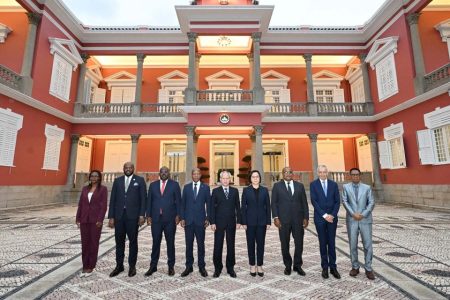The Macao Light Rapid Transit (LRT) train system carried more passengers in 2024 than it did in 2023, according to the LRT Corporation’s annual report, which showed that the network carried around 5.37 million people last year, up by 117 percent year-on-year.
These passengers were shuttled by roughly 129,000 train services, with the report showing that the average number of daily passengers was on an upward trend since the middle of 2024. In fact, the LRT Corporation noted that in December 2024, the LRT broke the 20,000 mark for the first time since it began paid services.
According to the operator, the increase in LRT usage “reflects the fact that more and more residents and visitors are choosing the light rail as their mode of transport.”
In terms of revenue, the LRT earned 770 million patacas (US$95.33 million) last year, a slight drop of 0.5 percent (-3.51 million patacas) year-on-year.
Operating revenue amounted to 39.94 million patacas (US$4.94 million), and included 27.73 million patacas (US$3.43 million) in ticket sales, a jump of 105 percent when measured against the 14.18 million patacas (US$1.75 million) from 2024. The government’s financial assistance accounted for 678 million patacas (US$83.94 million) of the total revenue, down by 3.88 percent year-on-year.
As for expenditure, the LRT Corporation reported the total at 746.76 million patacas (US$92.5 million) in 2024, with staff-related spending hitting 296.29 million patacas (US$36.7 million).
[See more: Macao’s LRT East Line is scheduled to start operations in the second half of 2029]
The LRT Corporation’s workforce also experienced a significant boost last year, growing from 247 employees in 2023 to 855 at the end of 2024.
Efforts have been made to localise the workforce, with the company noting that over 95 percent of the operations team now consists of Macao residents.
Looking ahead into the future, the LRT Corporation said it would proactively coordinate with the SAR government on the LRT East Line project and continue to provide feedback on the operation of the system.
At the same time, the firm hopes that as the passenger level gradually increases, it can generate other sources of income outside of ticket sales.
It added that the 7.7 kilometre East Line, which is to run between the Border Gate and the Taipa Ferry Terminal via the currently unnamed reclaimed areas known as Zone A and Zone E, is scheduled to begin operation in 2029.
Plans for a possible West Line that connects the Qingmao Port with the Barra LRT station via the Fai Chi Kei and Inner Harbour districts are also being explored, although the government has yet to greenlight the project.






